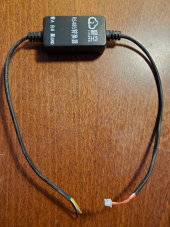I'll be doing exactly the same for my "P-" pair. My placement of BMS (above the cell tops) allows both of the supplied wires to reach the "B-" battery lug without creating a jumper. This photo shows one of the 7-AWG "B-" wires, with my "better terminal lug attached (smaller hole, bigger surface area for the lug itself). That should be adequate for my needs, although I could upgrade to much larger "plain copper threaded wires in place of these small ones.Yes. currently "hacked" both together using two 6AWG crimp on connections to a short 4AWG..
View attachment 96415
I only had the display with switch. I ordered the BMS on April 20th.
Attachments
Last edited:






